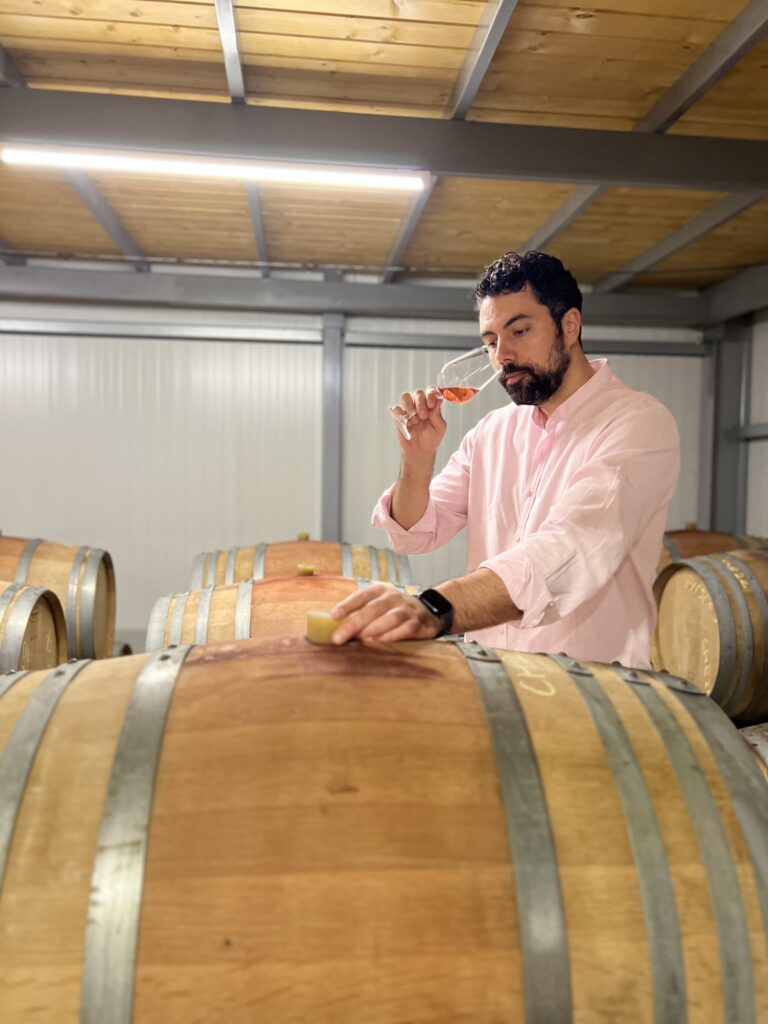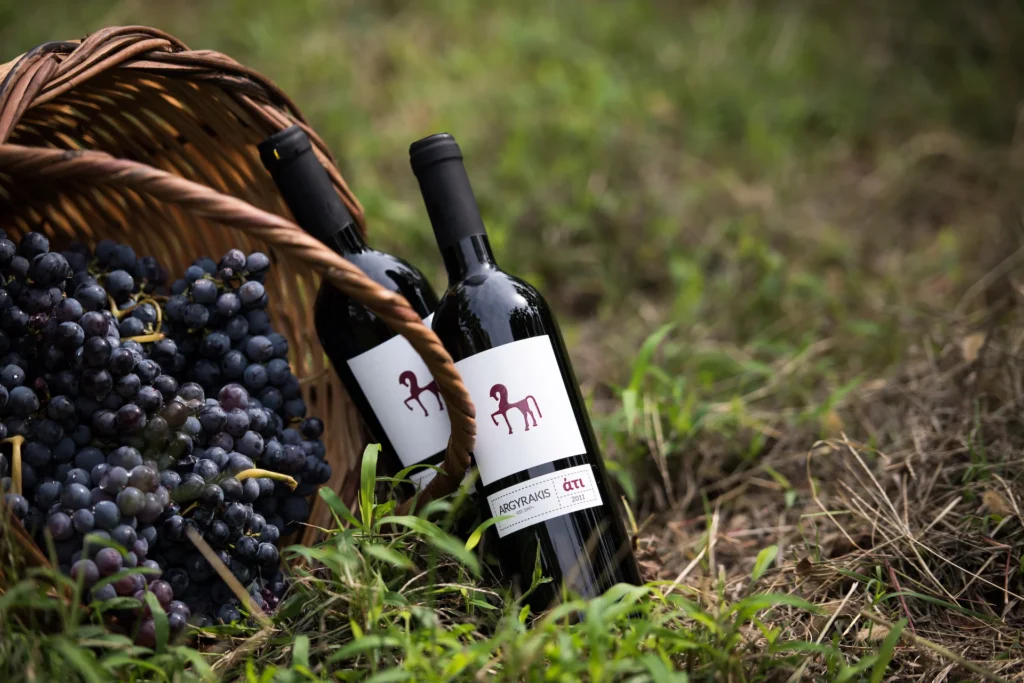-Πότε ξεκίνησε το βιοκλιματικό οινοποιείο – εφαρμόζονται τεχνολογίες ανανεώσιμης ενέργειας σε όλες τις
μονάδες;
Η κατασκευή του οινοποιείου ολοκληρώθηκε στα τέλη του 2015. Ο
σχεδιασμός, ωστόσο, είχε ξεκινήσει πολύ νωρίτερα, κατά τη διάρκεια της
μεταπτυχιακής μου διατριβής, όπου το βιοκλιματικό οινοποιείο ήταν το
αντικείμενο μελέτης. Η σκέψη είναι απλή, προσπαθούμε να μειώσουμε
την κατανάλωση στο ελάχιστο και να παράγουμε τη δική μας ενέργεια.
Συγκεκριμένα, έχουμε τοποθετήσει το οινοποιείο σε κατάλληλη θέση ώστε να
εκμεταλλευόμαστε πλήρως τον αέρα και τον ήλιο. Ο στόχος μας είναι να
μπορούμε να διατηρούμε σταθερή θερμοκρασία το καλοκαίρι και το χειμώνα με
ελάχιστη κατανάλωση ενέργειας. Έχουμε μειώσει στο μέγιστο τις απώλειες ενέργειας
προς το εξωτερικό περιβάλλον, με κατάλληλη μόνωση και μείωση των
ανοίγματος (πόρτες, παράθυρα).
Από την πλευρά της παραγωγής, όλα τα μηχανήματα που έχουμε επιλέξει να
χρησιμοποιήσουμε έχουν ως στόχο τη μείωση της απαιτούμενης ενέργειας. Τα φωτιστικά σώματα του οινοποιείου
είναι τύπου LED. Χρησιμοποιούμε ηλιακούς
συλλέκτες για όλο το ζεστό νερό που χρησιμοποιείται στο οινοποιείο. Επίσης,
εγκαταστήσαμε τα αντίστοιχα φωτοβολταϊκά πάνελ 25kw, προκειμένου να
είμαστε πλήρως αυτοδύναμοι. Έτσι καταφέραμε να κάνουμε την ενεργειακή κλάση του
οινοποιείου να είναι Α+.
-Έχετε κάνει οικονομική απόσβεση της επένδυσης;
Αν και αρχικά εκτιμούσαμε ότι η απόσβεση θα γινόταν σε έξι χρόνια,
η χρήση προγραμμάτων όπως το ΝΣΡΑ έχει μειώσει αυτόν τον χρόνο στο μισό!
Πιστεύουμε ότι οι επενδύσεις στον τομέα της ενέργειας είναι οικονομικά αποδοτικές και
συμβάλλουν στον κοινό στόχο ενός βιώσιμου μέλλοντος.
-Ποιο είναι το αποτέλεσμα όσον αφορά την κατανάλωση ηλεκτρικής ενέργειας, τι έχετε
κερδίσει από ενεργειακή άποψη από τότε που το οινοποιείο άνοιξε για πρώτη φορά ως βιοκλιματικό
οινοποιείο;
Τα αποτελέσματα είναι πολύ εντυπωσιακά, ήδη από το 2018 οι
λογαριασμοί ηλεκτρικού ρεύματος έγιναν μηδενικοί. Φυσικά, υπάρχουν κάποια τέλη πουπληρώνουμε, όπως για την ERT, αλλά όσον αφορά την
κατανάλωση ηλεκτρικού ρεύματος από το δίκτυο, είναι μηδενική.
Σκεφτείτε ότι ένα οινοποιείο του μεγέθους μας θα είχε κατανάλωση της
τάξης των 900-1100 ευρώ το μήνα, ενώ για εμάς είναι 0€. Από οικονομική άποψη, αυτή η
αλλαγή αντιπροσωπεύει σημαντική μείωση των λειτουργικών μας εξόδων. Εκτός
από το περιβαλλοντικό όφελος, το οποίο θεωρούμε πρωταρχικό, από
οικονομική άποψη η διαφορά είναι μεγάλη για εμάς και τη βιωσιμότητα του
οινοποιείου.
-Ποιο είναι το συγκεκριμένο περιβαλλοντικό αποτύπωμα της
επιχείρησής σας;
Όσον αφορά τη λειτουργία του οινοποιείου, το ενεργειακό αποτύπωμα τείνει στο
μηδέν. Η μεγαλύτερη κατανάλωση ενέργειας παρατηρείται στη διανομή
του κρασιού, καθώς χρησιμοποιούμε αυτοκίνητο με κινητήρα ντίζελ. Ωστόσο,
από τις αρχές του 2024, το εταιρικό φορτηγό θα αντικατασταθεί με ένα νέο
ηλεκτρικό φορτηγό, το οποίο θα φορτίζεται από τους ηλιακούς συλλέκτες του οινοποιείου. Με αυτόν τον
τρόπο θα μηδενίσουμε επίσης το ενεργειακό αποτύπωμα της
διανομής του κρασιού. Αυτές οι κινήσεις έχουν πολύ σημαντικό περιβαλλοντικό
αποτύπωμα, καθώς το κρασί που φτάνει στον καταναλωτή έχει παραχθεί και
παραδοθεί χρησιμοποιώντας αποκλειστικά ηλιακή ενέργεια.

